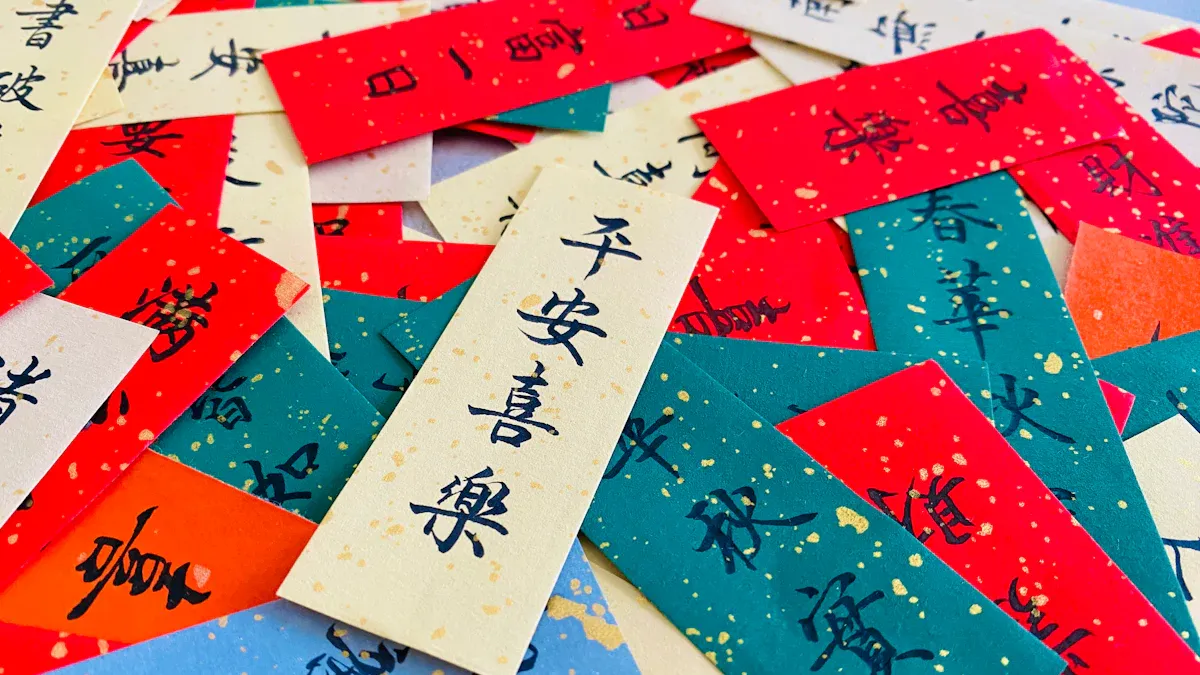
You can find Chinese Symbols in many places, like art and jewelry. These symbols show animals, flowers, and special icons. Each symbol has a meaning, like luck or virtue. People use them to bring good luck or share values. Many symbols come from things in nature. They often stand for beauty, strength, or harmony. When you learn about these symbols, you see their bigger role in life.
Key Takeaways
Chinese symbols stand for big ideas like luck, strength, and harmony. Each symbol means something special. Many are tied to nature and culture. Learning about these symbols helps you know Chinese traditions and values. You can use Chinese symbols in art, jewelry, and tattoos. They help show what you believe. Picking the right symbol for a gift shows you care and respect the person. Symbols like the dragon mean power. The phoenix stands for renewal. It is important to know the meaning of each symbol. This helps you understand them the right way. Using symbols every day can bring good feelings. They also help you feel close to Chinese culture.
Chinese Symbols
Overview
Chinese symbols are easy to spot every day. You see them in art and jewelry. They also show up in buildings. Each symbol means something special. Some mean luck. Others stand for strength or harmony. Symbols can look like animals or flowers. Some are special icons. The meaning helps you learn about Chinese beliefs. It shows what people value.
Chinese symbols fit into main groups. Look at the table below. It shows how experts sort them:
Category Type |
Description |
Percentage of Lexicon |
|---|---|---|
Semantographs |
Characters with only semantic components. |
~5% |
Signs |
Characters with only form components. |
~18% |
Semantic–form Compounds |
Characters that combine semantic and form components. |
~19% |
Phonetic–form Compounds |
Characters that combine phonetic and form components. |
~58% |
Check out the chart below. It shows how common each group is:
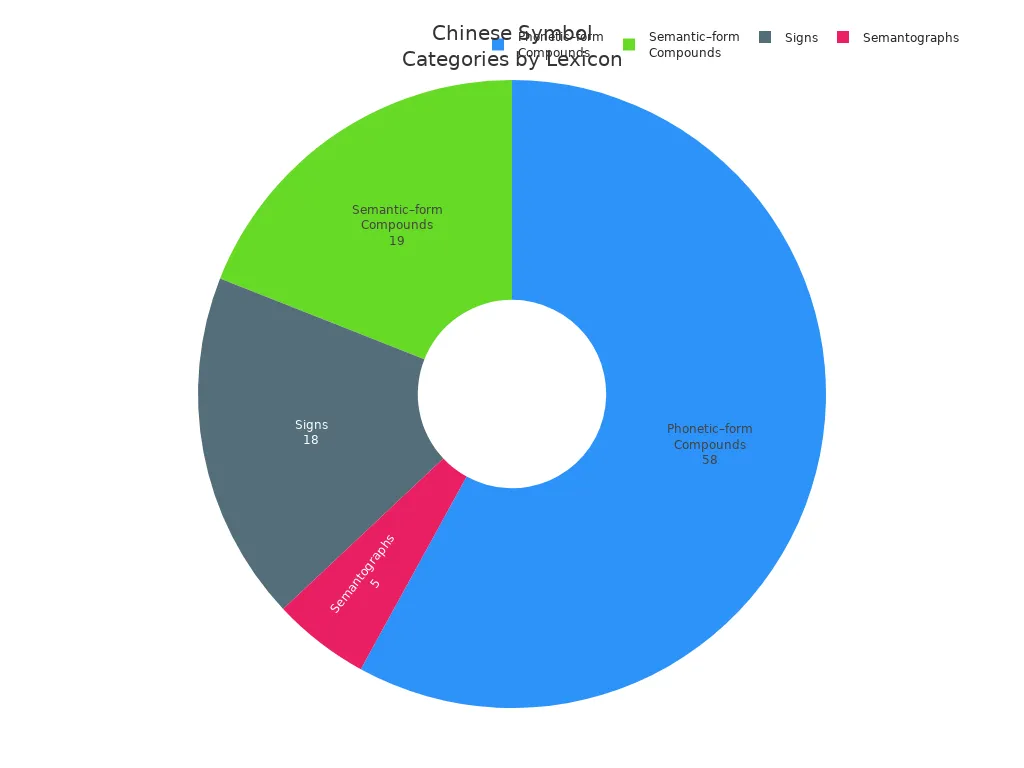
Studying Chinese symbols teaches you their meanings. You learn how they shape art and style. Every symbol has its own story. Some come from old legends. Others show daily life. The meaning can change with how you use it.
Cultural Significance
Chinese symbols are important in Chinese culture. You see them in festivals and family events. They also appear in modern designs. These symbols often mean good luck or long life. People use them to share hopes.
A long time ago, people near the Yellow and Yangzi Rivers used symbols. They showed respect for nature and the afterlife. Ancient objects have mythical animals and icons. These symbols shaped beliefs about ancestors. They also helped with spiritual ideas. Over time, symbols became part of philosophy. Confucianism and Daoism used them. Later, Buddhism, Islam, and Christianity added new meanings.
Today, Chinese symbols connect to personal well-being. At Eclipticjew, you find bracelets with crystals and Taoist rituals. These often show the Bagua and Yin-Yang. Wearing these symbols can help you feel calm. Many think they protect you from bad energy. They also help you connect with your spirit.
Tip: Pick a Chinese symbol for jewelry or art that matches your values and its meaning.
Taoist bracelets show symbols like the Bagua and Yin-Yang.
These symbols may help you feel inspired.
Wearing them can balance your body and mind.
Many believe these symbols keep away bad energy.
Chinese symbols still shape art and daily life. You find new meanings as you learn more. Each symbol helps you explore Chinese culture and its traditions.
Chinese Characters
Chinese characters are the main part of the Chinese language. You see them on signs, art, and jewelry. Each character is a logogram. This means it stands for a word or idea. People use them to write, read, and share feelings. There are different types, like ideographs and pictographs. Every character has its own meaning and story.
Today, there are 8,105 common Chinese characters. This number includes 3,500 main characters. There are also 3,000 secondary and 1,605 tertiary characters. You can find 2,574 traditional characters and 1,023 variants. Most college graduates know about 3,000 to 4,000 characters. These characters help you learn about Chinese history and culture.
Common Characters
Chinese characters often show big ideas. Some mean luck, prosperity, or long life. You see these at festivals and every day.
Luck
The 福 (fú) character means luck. People put it on red paper for Spring Festival. They hang it upside down to bring good fortune. Artists use it in calligraphy to decorate homes. 福 brings hope for happiness and success.
Prosperity
The 禄 (lù) character means prosperity. You see it in businesses and on gifts. It stands for wealth and success. People use it to wish for growth and achievement. You find it in calligraphy on banners and scrolls.
Longevity
The 寿 (shòu) character means longevity. You see it at birthday parties for elders. It stands for a long and healthy life. People use it in art, jewelry, and calligraphy. 寿 shows respect for age and wisdom.
Virtues
Chinese characters also show virtues. These include love, harmony, and peace. You find these in stories, art, and daily talk.
Love
The 爱 (ài) character means love. You use it to show care for family and friends. It appears in poems, songs, and calligraphy. You see it on gifts and decorations. Love is very important in Chinese culture.
Harmony
The 和 (hé) character means harmony. You see it in homes and schools. It stands for peace and unity. People use it to wish for good relationships. Harmony matters a lot in Chinese society.
Peace
The 平安 (píng ān) character means peace. You use it to wish safety and calm. It appears on cards and banners. People use it during holidays and special events. Peace is a common wish in Chinese culture.
Note: Virtues like loyalty, filial piety, love, faithfulness, and peace come from the Eight Virtues. These values are still important today. You see them in both old traditions and modern life.
Component |
Meaning |
Significance |
|---|---|---|
ㄔ (left half) |
Upright behavior |
Shows moral conduct |
十目一心 (right half) |
Gods observe human hearts |
Reminds you of virtue in actions |
Everyday Use
Chinese characters are part of daily life. People use them to share happiness and family values.
Happiness
The 喜 (xǐ) character means happiness. You see it at weddings and parties. People use it to wish joy and celebration. Artists use it in calligraphy to decorate event spaces. 喜 brings smiles and good feelings.
Family
The 家 (jiā) character means family. You use it to talk about home and loved ones. It appears in stories, songs, and art. Family is a strong value in Chinese culture. You see 家 in calligraphy on walls and gifts.
Chinese characters are more than just words. They are ideographs that show feelings, hopes, and traditions. You find them in calligraphy, art, and jewelry. People use them to express themselves and connect with others. The types of Chinese characters include logograms, ideographs, and pictographs. Each type helps you understand the meaning and beauty of the Chinese language.
You see popular Chinese characters like 中国 (zhōng guó), which means China. 中 stands for "middle" and 国 means "country." This shows the idea of China as the "Middle Kingdom." You also see 华埠 (huá bù), which means Chinatown. 华 stands for China and 埠 means "wharf." During Chinese New Year, you see 新春快乐, which means "Happy Beginning of Spring." These characters help you celebrate and share joy.
People use Chinese characters to show friendship, courage, destiny, and love. Each character is an ideograph with deep meaning. You see them in calligraphy, tattoos, and art. Artists use 福 to show good fortune and happiness. This keeps traditions alive and shows the dreams of modern society.
Chinese characters help you learn about Chinese culture. People use them to share values, celebrate events, and express feelings. The types of Chinese characters make the language rich and beautiful. You see ideographs and logograms in every part of life. Calligraphy turns these characters into art. Chinese characters help you connect with history and today.
Symbolic Animals
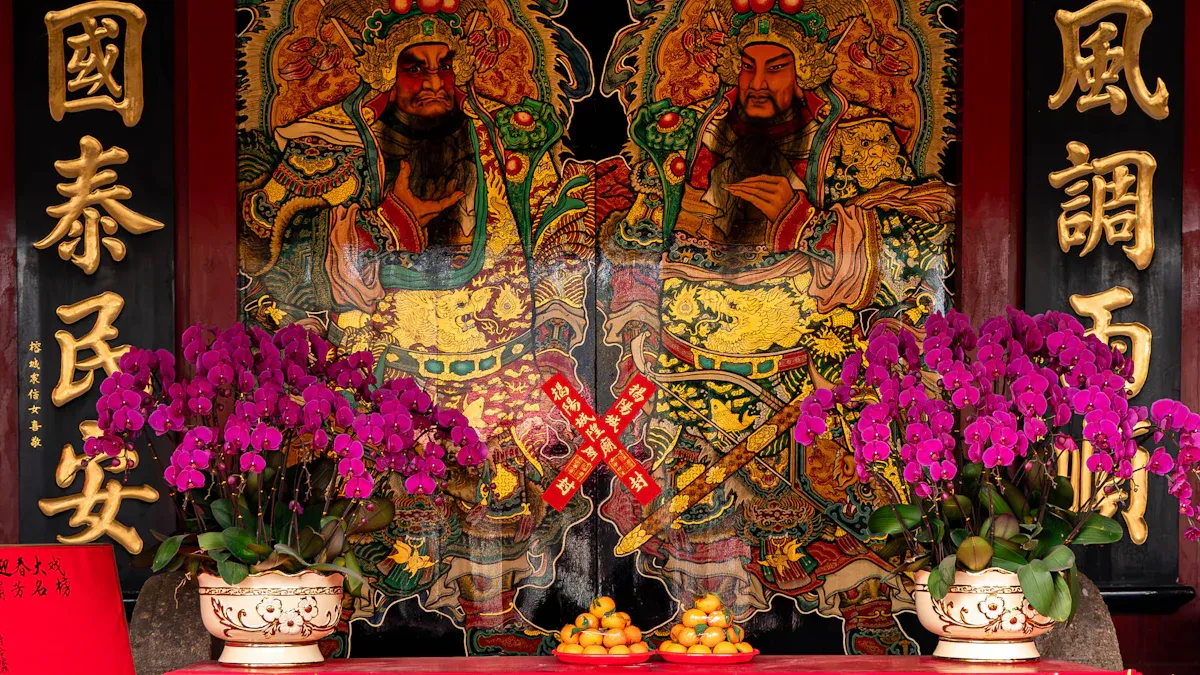
Dragon
Dragons are seen often in Chinese culture. The dragon means power and strength. It also brings good luck. People think dragons help with prosperity. They believe dragons keep away bad luck. You see dragon pictures on ceramics and buildings. Artists use dragons to show energy and good signs. Many people wear dragon jewelry like rings and pendants. These items stand for strength and safety. You might pick a dragon pendant for luck.
The dragon stands for power and strength.
It brings luck and wealth.
Dragons are found in art, jewelry, and buildings.
Dragon jewelry is a sign of safety.
Wearing a dragon symbol links you to old traditions. You show respect for Chinese spirit and energy.
Phoenix
Dragons can mean many things, and phoenixes are their opposite in most ways. Dragons are linked to water, but phoenixes stand for fire. Like yin and yang, dragons are masculine and phoenixes are feminine. They are different but need each other. The dragon and phoenix are symbols for the emperor and empress.
The Chinese phoenix, called Feng Huang, is the leader of birds. The phoenix means peace and wealth. When a new ruler comes, the phoenix shows a new start. The phoenix stands for fire and new life. People think the phoenix lives forever and always tries to renew. You see phoenix art, embroidery, and jewelry. Many people get a chinese phoenix tattoo for hope and change. The phoenix is used in wedding decorations to show harmony. If you want a symbol for new starts, you may choose a chinese phoenix tattoo. Artists use the phoenix to show beauty and grace. The chinese phoenix tattoo is a sign of strength and peace.
The phoenix means peace and wealth.
It stands for new life and hope.
Phoenix art is found in jewelry and tattoos.
Tiger
The tiger is a sign of courage and strength. Tigers are strong hunters and show survival skills. People respect the tiger for its brave spirit. You see tiger pictures in art and clothes. The tiger is in stories and sayings, like "brave as a tiger." Many think the tiger has magic powers and keeps away evil. Artists use the tiger to inspire courage and strength. You might wear a tiger charm to feel safe and strong.
Courage: The tiger means bravery.
Strength: It shows power and survival.
Independence: The tiger stands for freedom.
Brave Spirit: It inspires strong will.
Magic Power: The tiger keeps away evil.
You connect with the tiger when you want to be strong and face hard times.
Tortoise
You see the tortoise in many Chinese legends and stories. This animal stands for long life and strength. People believe the tortoise has magical powers because it lives for many years and survives tough times. In old myths, some say the world sits on the back of a giant turtle. The shell of the tortoise shows the link between heaven and earth. The flat bottom means earth, and the curved shell means sky.
The tortoise is one of the Four Auspicious Beasts in Chinese culture. You find it with the dragon, phoenix, and tiger. Each animal has its own meaning. The tortoise brings knowledge, perseverance, and prosperity. Many families place turtle images in their homes. They hope for support and success.
The tortoise teaches you to stay strong and patient. It reminds you that slow and steady wins the race.
Here is a table showing what the tortoise means:
Symbolism |
Description |
|---|---|
Longevity |
The tortoise is linked to long life and renewal. |
Strength |
It stands for endurance and power. |
Creation Myths |
The tortoise plays a role in stories about the start of the world. |
Element |
It represents water and winter. |
Protection |
The tortoise protects and shapes the world with other sacred animals. |
You can wear tortoise jewelry or display turtle art. These symbols help you feel safe and remind you to keep learning.
Crane
The crane is a graceful bird in Chinese art and folklore. You see cranes in paintings, embroidery, and jewelry. This bird stands for longevity, happiness, and moral integrity. Many artists show cranes with pine trees or tortoises. These images bring wishes for a long and happy life.
Cranes have red crowns. People think these birds bring good luck and joy in marriage. In stories, cranes connect heaven and earth. Some believe cranes carry the souls of loved ones to the sky. You see cranes at weddings and festivals. They remind you to live with honor and kindness.
Cranes mean long life and happiness.
They show moral strength and good luck.
Artists use cranes to wish for peace and unity.
If you want to show hope and purity, you can choose crane art or jewelry.
Fish
Fish are popular symbols in Chinese culture. You see fish in art, jewelry, and decorations. The word for fish, "yú," sounds like the word for abundance. This makes fish a sign of wealth and good fortune. People use fish images during Chinese New Year to wish for a rich and lucky year.
Here is a table showing what different fish mean:
Fish Type |
Symbolic Meaning |
|---|---|
Koi Fish |
Good luck, abundance, perseverance |
Goldfish |
Wealth and prosperity |
Carp |
Perseverance and success |
Catfish |
Abundance and financial success |
Dragon Fish |
Good luck and fortune |
You find fish motifs in many places. Artists use them to bring wishes for success and happiness. Wearing fish jewelry or displaying fish art can help you feel hopeful and confident.
Fish remind you to keep moving forward and reach your goals. They bring energy and joy to your life.
Philosophical Icons
Yin-Yang
You see the yin-yang symbol in many places. It looks like two shapes swirling together. One part is dark, and one part is light. People first wrote about yin-yang a long time ago. They used it to talk about sunlight and darkness. Yang means movement and light. Yin means rest and darkness. The symbol comes from daily life. You notice day turns into night. Seasons also change.
The yin-yang symbol started with an old way to tell time. People used a pole to measure shadows during the year. This method began in China over 2,600 years ago. Yang starts at the winter solstice. It means daylight is stronger than darkness. Yang is linked to the sun. Yin starts at the summer solstice. It means darkness is stronger than daylight. Yin is linked to the moon.
Yin-yang shows that everything has two sides. It means dark and light, male and female, rest and movement. These forces are opposites but work together. You see yin-yang in Taoism and Confucianism. These ideas teach you to find balance. Wearing yin-yang jewelry reminds you to seek harmony. Artists use yin-yang in paintings and decorations. You see the symbol in homes, schools, and temples.
Yin-yang stands for cosmic duality in the universe.
It shows opposite but matching forces like dark/light and male/female.
The idea shaped Chinese philosophies such as Taoism and Confucianism.
Yin-yang helps you understand change. When you feel stressed, you remember balance brings peace. The symbol shows how opposites can work together. You find this idea in nature, art, and daily life.
Bagua
Bagua is another key symbol in Chinese philosophy. You see bagua as eight trigrams in a circle. Each trigram stands for a natural thing or idea. People use bagua in feng shui to bring harmony to homes. You find bagua on Taoist amulets and in martial arts.
Here is a table showing each trigram and its meaning:
Trigram |
Name |
Element/Concept |
Description |
|---|---|---|---|
☰ |
Qián |
Heaven |
Warming |
☳ |
Zhèn |
Thunder |
Storming |
☵ |
Kǎn |
Water |
Pooling |
☶ |
Gèn |
Mountain |
Jutting |
☴ |
Xùn |
Wind |
Dispersing |
☲ |
Lí |
Fire |
Dancing |
☱ |
Duì |
Lake |
Engulfing |
☷ |
Kūn |
Earth |
Resting |
Bagua helps you learn how nature works. Each trigram also stands for a family member. Heaven is the father. Earth is the mother. Thunder is the first son. Water is the second son. Mountain is the third son. Wind is the first daughter. Fire is the second daughter. Lake is the third daughter.
Heaven (Qián): Father
Earth (Kūn): Mother
Thunder (Zhèn): 1st Son
Water (Kǎn): 2nd Son
Mountain (Gèn): 3rd Son
Wind (Xùn): 1st Daughter
Fire (Lí): 2nd Daughter
Lake (Duì): 3rd Daughter
You use bagua to find balance in your space. When you set up your room, you might use bagua for good energy. Bagua teaches you to respect nature and family.
Lotus
Lotus is a flower with special meaning in Chinese culture. You see lotus in art, jewelry, and religious pictures. The lotus grows in muddy water but blooms clean and bright. This shows purity and strength.
Chinese stories say the lotus brings purity and good luck. People say "lotus brings noble children" to show its lucky meaning.
You find the lotus in Confucianism, Taoism, and Buddhism. In Confucianism, the lotus means moral strength and purity. People like how the lotus stays clean in the mud. In Taoism, the lotus stands for natural beauty and spiritual growth. You see gods and immortals with lotus flowers. In Buddhism, the lotus means enlightenment and rebirth.
The lotus stands for purity, honesty, and spiritual growth.
In Confucianism, it means moral strength and purity. People admire how it rises clean from the mud.
In Taoism, it means natural beauty and spiritual growth. You see it with gods and immortals.
The lotus is linked to purity and good luck in Chinese stories.
People use it in religion to show rebirth and enlightenment.
The lotus flower is often in art, showing its special beauty.
In Taoist tradition, the lotus is a sign of enlightenment and rebirth. Sacred books like the Tao Te Ching talk about the lotus. This shows the lotus is important as a natural and spiritual symbol.
You use lotus images to inspire yourself. When you see lotus art, you remember to stay pure and strong. Lotus jewelry reminds you of beauty and hope. You find lotus tattoos and paintings in many places. The lotus helps you connect with your spirit and values.
Double Happiness
You often see the double happiness symbol at Chinese weddings. This symbol looks like two characters for happiness (喜, xǐ) placed side by side. People call it "囍" (shuāng xǐ). The symbol means joy and good fortune for couples. It started during the Song Dynasty when an Emperor's chancellor used it for his marriage. Over time, families began to use it for wedding celebrations.
You find double happiness on red banners, paper cuttings, and invitations. The bright red color stands for luck and love. When you walk into a Chinese wedding, you notice this symbol everywhere. It decorates the walls, tables, and even the gifts. The symbol brings wishes for a happy marriage and a joyful life together.
People also use double happiness in feng shui. You might place it in your bedroom to bring harmony and love. Many couples choose jewelry or home decor with this symbol. It helps create a warm and loving space.
Tip: If you want to wish someone a happy marriage, choose a gift with the double happiness symbol. This shows your hope for their joy and prosperity.
Here are some common ways you see the double happiness symbol:
Wedding decorations like banners, lanterns, and table settings
Gifts for newlyweds such as jewelry, artwork, and keepsakes
Feng shui items to enhance love and happiness in the home
The double happiness symbol stands for more than just a wedding. It reminds you of the importance of joy and unity in life. When you use this symbol, you share good wishes and celebrate love.
Flowers and Plants
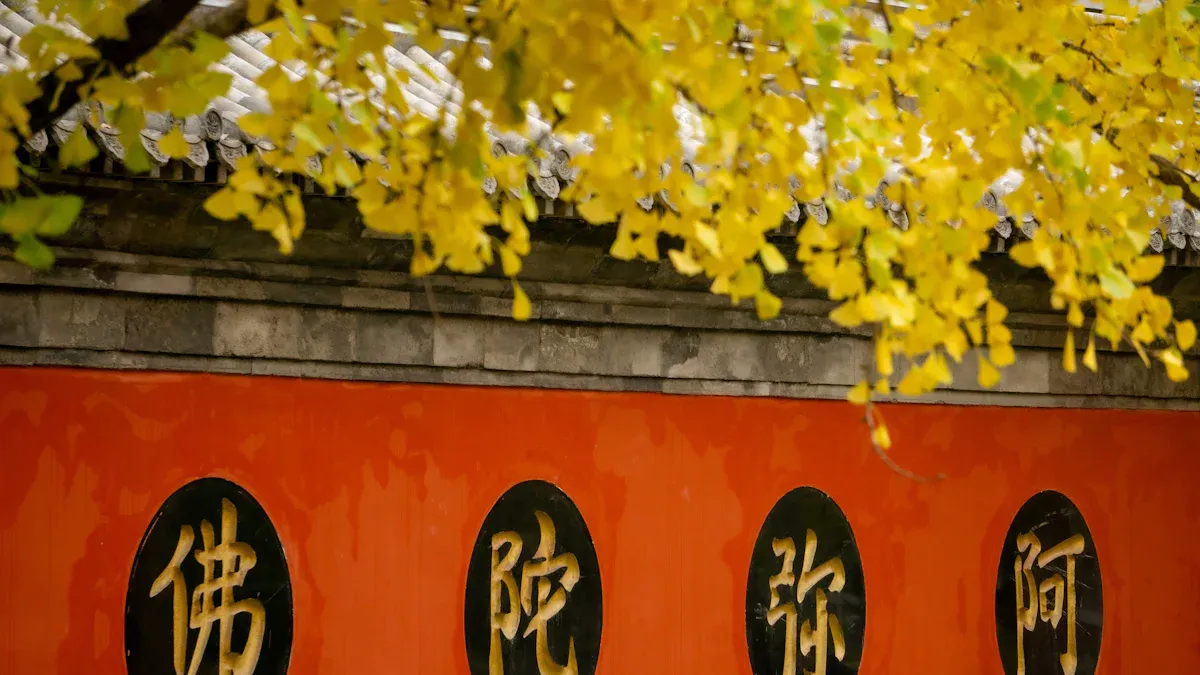
Peony
Peonies are in many Chinese paintings and decorations. This flower means wealth, honor, beauty, and love. People call it the "Flower of Wealth and Honor." Peonies show up at Chinese New Year and other parties. You see their bright colors and big petals in art and embroidery.
Peonies stand for wealth and high status.
They mean beauty and grace.
People use peonies to wish for luck and happiness.
Artists and poets say peonies are like beautiful women. You find this flower in poems and stories about elegance. The Luoyang Peony Festival celebrates the peony as a symbol of lasting beauty. If you pick peony art or jewelry, you share wishes for success and joy.
Plum Blossom
Plum blossoms bloom in late winter, even with snow. These flowers show perseverance, renewal, and hope. The plum blossom, or meihua, is one of the "Four Gentlemen" in Chinese art. It stands for winter and shows strength in tough times.
Plum blossoms bloom in cold winter, showing strength.
They mean hope and new starts.
Artists use plum blossoms to show heroism and courage.
Taoist and Confucian traditions honor the plum blossom for its noble spirit.
You see plum blossoms in paintings and poems. People celebrate this flower as a lucky sign and a promise of spring. When you look at plum blossom art, you remember to stay strong and hopeful, even when life is hard.
Bamboo
Bamboo grows tall and straight. You see it in gardens, paintings, and poems. Bamboo means honesty, humility, loyalty, and integrity. Writers and artists use bamboo to show noble traits. Liu Xiaoxian wrote "Ode to Bamboo," praising its upright nature. Zheng Xie talked about bamboo's strength in his poem "Bamboo and Stone." Su Dongpo said bamboo is important in life, showing its deep meaning.
Bamboo stands for honesty and integrity.
It means resilience and toughness.
People admire bamboo for humility and loyalty.
Many famous artists painted bamboo to show these ideas. You can see their work in museums and books.
Artist Name |
Dynasty |
Contribution |
|---|---|---|
Yuan |
Painted bamboo to show noble ideals |
|
Wen Zhengming, Xu Wei |
Ming |
Showed bamboo's beauty and cultural meaning |
Shi Tao, Gao Fenghan |
Qing |
Explored bamboo's shape and character |
You see bamboo in Chinese homes and gardens. People use bamboo in art and decor to remind themselves to be strong and honest. If you pick bamboo designs, you show respect for these values. Bamboo teaches you to bend but not break, even when life is hard.
Orchid
You often see orchids in Chinese art and poems. Orchids are one of the “Four Gentlemen” in Chinese art. The other three are bamboo, plum blossom, and chrysanthemum. Artists use orchids to show beauty and elegance. Orchids have soft petals and a graceful look. These things make orchids stand for purity and class.
In China, orchids mean important values. Orchids stand for honesty, humility, and wisdom. Confucian scholars like orchids because they show the ideal of the junzi. A junzi is a noble person who is honest and strong. Orchids remind you to keep your values and stay pure.
Orchids also mean moral purity and being honest. You find this meaning in old stories and poems. When you see an orchid in a quiet place, you think about being strong. Orchids teach you to keep your heart clean and your mind clear.
People use orchids at festivals for luck and joy. You might see orchids at spring parties. Orchids make homes and gardens look pretty. Families love their bright colors and soft smell. Orchids help you feel calm and happy.
Orchids are special at funerals. People pick orchids to show love and respect for someone who died. The flower’s beauty reminds you that love and honor last. Orchids help families share feelings and remember loved ones.
Here is a table showing what orchids mean in Chinese culture:
Quality |
Orchid Symbolism |
|---|---|
Integrity |
Honest and upright |
Purity |
Clean spirit and heart |
Grace |
Elegant and refined |
Humility |
Modest and gentle |
Wisdom |
Thoughtful and wise |
Everlasting Love |
Respect for the deceased |
Tip: If you want a tattoo or jewelry that shows strength and beauty, pick an orchid design. Orchids remind you to be graceful and true to yourself.
Orchids inspire many people. You see them in art, writing, and on clothes. When you choose an orchid for your home or as a gift, you wish for beauty, wisdom, and happiness. Orchids help you celebrate special times and honor good values.
Understanding Chinese Characters
Context
You need context to understand chinese characters. The same symbol can mean different things. It depends on the culture and situation. For example, red means luck in chinese writing. In other places, red can mean danger or purity. You should look at the event and people involved. The meaning changes with where and when you see it.
Culture |
Symbol Color |
Meaning |
|---|---|---|
Chinese |
Red |
Luck and happiness |
Middle Eastern |
Red |
Danger |
Indian |
Red |
Purity and spirituality |
Chinese symbols show good or bad fortune. They also stand for wealth, happiness, and health. Some numbers have special meanings in chinese writing. The number 4 sounds like death, so people avoid it. Context helps you know what a symbol really means.
Chinese symbols can mean luck or bad luck.
They show wishes for wealth and happiness.
Some numbers, like 4, are not used much.
Variations
There are many variations in chinese writing. Chinese uses traditional and simplified characters. Simplified characters make writing faster. But they can cause confusion. Sometimes, one character stands for different words. For example, 觀 and 觀 both become 观 in simplified chinese. This makes it harder to tell them apart.
Some words, like huá 划 (to row) and huà 劃 (to plan), look the same after simplification. You need context to know which word is meant. Merging characters can change traditions. For example, 後 and 后 were different family names. Now, they look the same, which can affect marriage customs.
Simplifying chinese characters helps people write quickly. But it also makes things less clear. You must use context to read chinese writing well. This helps you avoid mistakes and understand better.
Simplified characters can look the same.
Merged characters may change traditions.
You need context to read chinese writing.
Misinterpretations
It is easy to make mistakes with chinese writing. People who are new to chinese mix up idioms and symbols. For example, ‘drawing a snake and adding feet’ means making something too hard. You might confuse characters like 目 for ‘eye’ and 日 for ‘sun’. These mistakes happen a lot when learning chinese.
If you ignore culture, you can make errors. The idea of ‘face’ (面子 miànzi) is very important in chinese culture. It affects how people act and show respect. You need to know these ideas to use chinese writing the right way.
Idioms can be misunderstood.
Similar characters may confuse you.
Culture is important for understanding chinese characters.
Tip: Always check the meaning and context before using chinese writing in art, tattoos, or gifts. This helps you avoid mistakes and show respect for chinese language.
Tips
It can seem hard to learn Chinese characters at first. You can make it easier by using some simple tips. These ideas help you read, write, and remember Chinese symbols with more confidence.
Practice Writing by Hand
Writing by hand helps you remember characters better. Your hands learn the shapes as you write. Your brain connects the strokes together. Try writing each character many times. This helps you remember and spot them faster.Learn Stroke Order Rules
Chinese characters have special stroke order rules. Learning the right order helps you write faster and neater. Stroke order also helps you remember how a character is built. You can find guides online or in books to show you the steps.Understand Radicals
Many Chinese characters have parts called radicals. Radicals give hints about what a character means or sounds like. If you know common radicals, you can guess new words. This makes learning new characters much easier.Use Flashcards and Quizzes
Flashcards and quizzes help you review characters often. You can make your own cards or use an app. Flashcards let you test your memory and see your progress. Quizzes make learning fun and show which characters need more practice.Engage with Parallel Texts
Reading stories with hanzi, pinyin, and English helps you match symbols to sounds and meanings. Parallel texts show how characters are used in real life. You see how words fit into sentences and stories.Create Stories for Characters
Making up stories about a character’s parts helps you remember it. For example, you can picture the "tree" character as branches and roots. These stories make learning fun and help you recall characters later.Explore Character Origins
Learning where a character comes from helps you understand it better. Some characters started as pictures of real things. Knowing their history can make them easier to remember.Use Spaced Repetition
Review characters at set times using spaced repetition. This method helps you remember words for a long time. Apps and online tools can remind you when to review each character.
Tip: Try using Chinese characters in your daily life. Label things at home, write short notes, or read simple texts. The more you use the symbols, the more natural they will feel.
If you follow these tips, you will build a strong base in Chinese characters. Reading, writing, and understanding symbols will get easier. Keep practicing, and you will see steady progress as you learn.
Practical Applications
Chinese Tattoo Symbols
You see tattoos everywhere today. Many people choose chinese tattoo symbols for their deep meanings and beautiful designs. When you pick a tattoo, you want it to show your values or tell your story. Chinese symbols work well for this because each one has a special meaning.
You can choose a chinese character tattoo to show ideas like love, strength, or peace. Some people pick a chinese calligraphy tattoo for its artistic style. The flowing lines make your tattoo look elegant and unique. You might also like a chinese yin-yang tattoo. This symbol stands for balance and harmony in life.
Here are some popular choices for chinese tattoo symbols:
Symbol Type |
Meaning |
Example Placement |
|---|---|---|
Chinese character tattoo |
Love, strength, peace |
Wrist, neck, ankle |
Chinese calligraphy tattoo |
Art, wisdom, beauty |
Back, arm, shoulder |
Chinese yin-yang tattoo |
Balance, harmony |
Chest, forearm, leg |
Tip: Always check the meaning of your tattoo before you get it. Ask a native speaker or a tattoo artist who knows chinese symbols.
You can use chinese tattoo symbols to honor your family or your beliefs. Some people choose a tattoo to remember a special event. Others want a symbol that brings good luck. You might see a chinese character tattoo with the word "福" for luck or "爱" for love. A chinese calligraphy tattoo can show your love for art and culture. If you want a symbol for balance, a chinese yin-yang tattoo is a great choice.
When you pick a tattoo, think about the size and where you want it. Small tattoos look good on your wrist or ankle. Large tattoos fit well on your back or arm. You can mix different chinese tattoo symbols to create your own design.
Many people use chinese tattoo symbols to connect with chinese culture. You show respect for the language and its history. You also share your values with others. Tattoos can be a way to express who you are.
Note: Make sure your tattoo artist uses the correct chinese symbols. A mistake can change the meaning of your tattoo.
If you want your tattoo to have extra meaning, you can add crystals or other symbols. Some people wear jewelry from Eclipticjew with their tattoos. This adds energy and beauty to your look.
Art and Decor
You see chinese symbols in art and home decor. Artists use these symbols to share stories and values. You might hang a painting with a dragon or phoenix in your living room. These animals bring luck and strength to your home.
Chinese calligraphy looks beautiful on scrolls and wall art. You can choose a piece with your favorite word, like "peace" or "harmony." Some people use chinese symbols on vases, plates, or even furniture. These designs make your space feel calm and special.
If you want to add meaning to your home, pick symbols that match your wishes. For example, a lotus flower stands for purity. A bamboo painting shows honesty and strength. You can also use red decorations for luck during the Chinese New Year.
Tip: When you buy chinese art, learn about the symbol first. This helps you choose the right piece for your home.
You can mix chinese symbols with modern decor. Try a simple calligraphy print in a frame. Add a dragon statue to your shelf. Use a phoenix pillow on your couch. These small touches bring culture and beauty to your space.
Language Learning
Learning chinese symbols helps you understand the culture. You start by learning simple characters like "人" for person or "水" for water. Practice writing each symbol by hand. This helps you remember the shapes and meanings.
You can use flashcards to test yourself. Write the chinese symbol on one side and the meaning on the other. Try to read short stories or poems with chinese characters. This shows you how the symbols work in real life.
Some people join language classes or use apps to learn chinese. You can also watch videos or listen to songs in chinese. This helps you hear how the words sound. Practice speaking with friends or teachers. The more you use the symbols, the easier they become.
Note: Learning chinese takes time and practice. Start with a few symbols each week. Review them often to remember better.
You can label things in your house with chinese symbols. Put a note on your door with the word "家" for home. Write "水" on your water bottle. These small steps help you learn faster.
If you want to make learning fun, draw the symbols or use them in art. Try writing your name in chinese characters. Share your work with friends or family. This builds your skills and confidence.
Gift Giving
Giving a gift with a Chinese symbol shows you care. These symbols help you send good wishes or celebrate big moments. You can also use them to honor what someone values. When you pick a gift, think about what the symbol means. Make sure it fits the person’s life and dreams.
Chinese symbols are found on jewelry, art, and home decor. Each symbol has its own message. For example, a dragon stands for strength and luck. A lotus flower means purity and hope. The 福 (fú) character means good fortune. Pick a symbol that matches the event or the person’s wishes.
At Eclipticjew, you find jewelry with Chinese symbols and real crystals. Each piece is chosen by hand and blessed in Taoist rituals. This gives your gift extra meaning and energy. A Yin-Yang bracelet can help someone feel balanced. A Bagua charm may bring harmony to their home. Crystals like jade or amethyst can help with health and clear thinking.
Tip: Learn what the symbol means before you buy. Ask the person if they have a favorite symbol or value. This makes your gift special for them.
Here are some popular Chinese symbols and what they mean for gifts:
Symbol |
Meaning |
Best For |
|---|---|---|
Dragon |
Strength, luck |
Birthdays, achievements |
Phoenix |
Renewal, hope |
New beginnings |
Lotus |
Purity, growth |
Graduations, healing |
Double Happiness |
Joy, marriage |
Weddings, anniversaries |
Bamboo |
Honesty, resilience |
Encouragement |
Crane |
Longevity, peace |
Elderly, retirement |
You can also give art prints, calligraphy, or home decor with these symbols. Red envelopes with the 福 character are common for Chinese New Year. They bring wishes for luck and wealth.
When you give a gift, tell the story of the symbol. Explain why you picked it. This helps the person feel special and understood. If you choose jewelry from Eclipticjew, talk about the crystal’s energy and the Taoist blessing. This shows you care about their well-being.
Note: Always respect the culture and meaning of the symbol. Pick gifts that match the person’s beliefs and values.
A gift with a Chinese symbol can inspire, protect, and bring joy. You help someone feel close to tradition and good energy.
Chinese symbols are part of daily life and culture. Learning about chinese animals, flowers, and icons helps you respect traditions more. You can use chinese symbols to show your values. They help you share your story with others. Always pick chinese symbols with care and respect. Explore chinese art, jewelry, and language to understand more. Using these symbols helps keep chinese culture alive. Try to learn new meanings and share them with friends. Your journey with chinese symbols can inspire you each day.
FAQ
What do Chinese symbols mean?
Chinese symbols show ideas like luck, love, and strength. You see them in art, jewelry, and writing. Each symbol has a special meaning that helps you understand Chinese culture.
Can I use Chinese symbols for tattoos?
You can choose Chinese symbols for tattoos. Make sure you know the meaning before you decide. Ask a native speaker or a tattoo artist who understands Chinese writing.
How do I pick the right symbol for a gift?
You should match the symbol to the person’s wishes or values. For example, give a dragon for strength or a lotus for purity. Always check the meaning first.
Are Chinese characters and symbols the same?
Chinese characters are written words. Symbols include animals, flowers, and icons. Both show ideas, but characters are part of the language. Symbols can be pictures or designs.
Why do people wear jewelry with Chinese symbols?
People wear jewelry with Chinese symbols to feel inspired or protected. You might choose a symbol that matches your goals or beliefs. Some jewelry uses crystals for extra energy.
What is the meaning of the Yin-Yang symbol?
Yin-Yang shows balance between opposites like light and dark. You use it to remind yourself to find harmony in life. Many people wear Yin-Yang jewelry for peace.
How can I learn Chinese characters easily?
You can practice writing by hand, use flashcards, and read simple stories. Try labeling things at home with Chinese words. Review often to remember better.
Do Chinese symbols bring good luck?
Many Chinese symbols stand for good luck, wealth, or happiness. You see them at festivals and in homes. People use these symbols to share positive wishes.
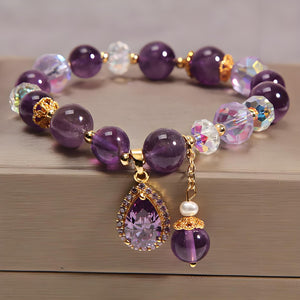
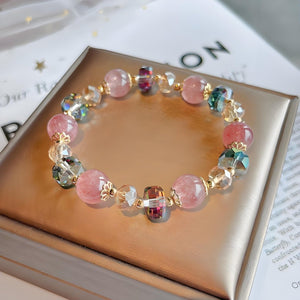
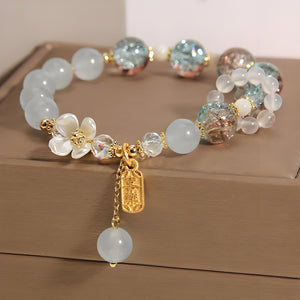
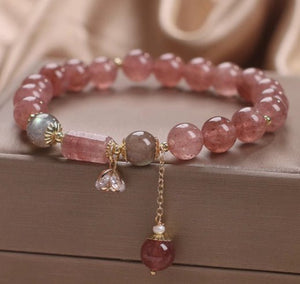


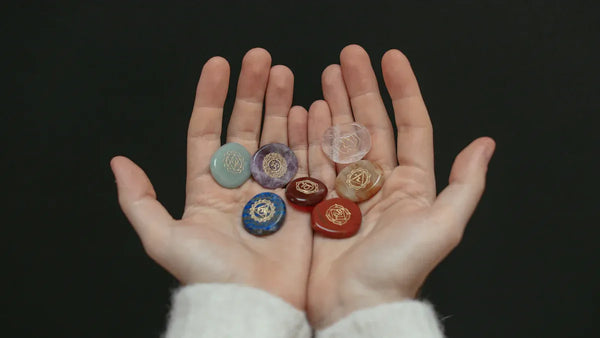
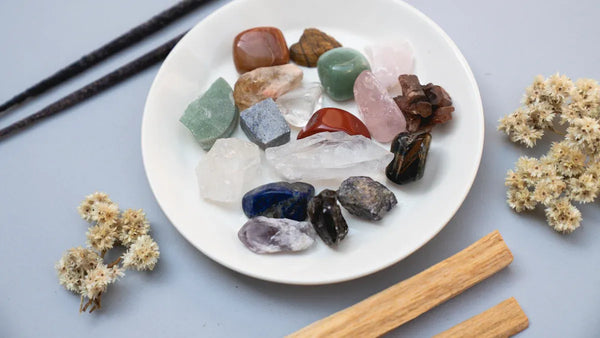
0 comments